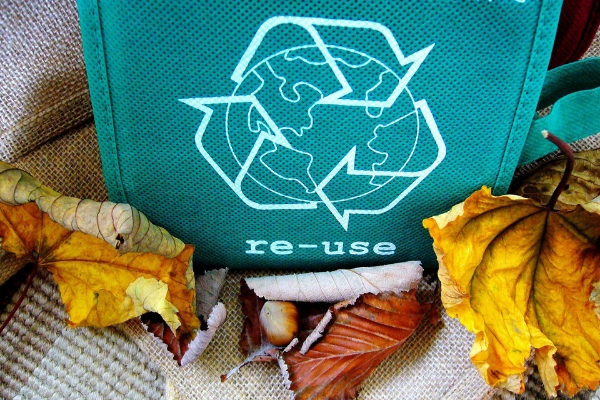Consumers’ Taste for Sustainability No Passing Fad
Sustainability is a hot topic, with global market research firm Mintel naming it as one of the top trends for the foodservice industry in 2019. But what is sustainability, and what does it mean for businesses?
Consumers’ growing taste for sustainability reflects seismic shifts in consumer spending. In 2018, Millennials became the generation with the biggest share of purchasing power. They have a very different worldview to previous generations: they value meaning, like to rally around important causes and increasingly look for authenticity.
And rising not far behind them are Gen Z, the youngest generation, of whom over 70 per cent are willing to pay more for products committed to positive social and environmental impacts.
These green-minded consumers extend their definition of food sustainability much further than Generation X’s organic smoothies. For them it includes the entire lifecycle of a food product, from farm to packaging to retailer and recycling.
At the same time, other parties such as investors and NGOs are increasingly holding foodservice companies to account for their sustainability credentials.
What It Means for Businesses
In such an environment, ignoring sustainability is no longer an option for foodservice businesses. But the good news is that embracing sustainability can deliver multiple benefits, by:
- differentiating the product offer, enhancing brand reputation and building customer loyalty;
- reducing risks and increasing business resilience by ensuring quality,
security and integrity of supply chains; reducing regulatory risks and reducing risks to reputation; - improving profit margins by generating savings and reducing costs, and by improving staff motivation and retention.
Brands aiming to connect with modern consumers need to build trust by showing authenticity and transparency. Consumers today have more access to more brands and more information than ever before, so businesses cannot hide behind empty excuses or vague responses.
In the food industry, they should be prepared to answer questions about where produce was sourced from and about ethical farming practices, environmental impacts, animal welfare, protection of public health, responsible staffing policies and community engagement.
Primary producers at the beginning of the food cycle are adapting. Costa Group, Australia’s largest fruit and vegetable producer, has announced it is switching to sustainable farming, which they expect will add tens of millions of dollars to their bottom line annually.
And big foodservice businesses once accused of not taking sustainability seriously are now making significant changes. Takeaway giant McDonald’s, has committed to using only sustainable packaging worldwide. McDonald’s said the move was in response to “overwhelming” customer feedback.
Francesca DeBiase, McDonald’s chief supply chain and sustainability officer, said customers’ No.1 request was “to use less packaging, sourced responsibly and designed to be taken care of after use”.
The world’s largest restaurant chain, with over 37,000 outlets worldwide, McDonald’s has also committed to sustainable and environmentally friendly sourcing of products such as beef.
Creating New Business
Sustainability is also spawning a whole new generation of businesses. Farmwall is a Melbourne-based startup that provides restaurants with vertical indoor farms that grow fresh herbs and microgreens.
Introducing Farmwalls into a restaurant is one way to add to the immersive experience that diners want today, where they feel they have stepped into a space that shares their sustainable and environmentally conscious values. The Farmwall service is hassle-free way for busy restaurant management to achieve this, as they provide an end-to-end service model based on a subscription fee.
“Experiential dining is a big trend now,’’ says Farmwall co-founder Serena Lee.
“This is a result of the consumer push for transparency in the food chain, of consumers demanding to know the full end-to-end cycle of where food started its journey and where it finished.’’
The How-To of Sustainability for your Business
But sustainability is about more than enhancing the dining experience, and businesses are now discovering that it can generate big savings too. In any operation reduced wastage means increased profits, and there are plenty of low-hanging fruit in the foodservice industry.
For example, over 2 million tonnes of food is wasted by businesses in Australia each year, resulting in significant waste disposal charges and lost product costs.
Becoming aware, and tracking what is being wasted – both before food gets to the customer, and post-consumer – is an essential first step to savings here. For example full-service restaurants may have more food waste, while fast-food businesses may find themselves trying to evaluate how to reduce single-use and packaging waste.
Tracking can be done manually using pen and paper, or by software. Software that combines waste tracking and management with other business tools such as pricing strategy and inventory management across multiple locations can reveal new insights into where wastage is really hurting the bottom line.
UK company Winnow, whose clients include hotel groups Accor and Hilton, supplies digital technology and data analytics that helps restaurants measure, monitor and reduce food waste. By typically cutting food waste by between 40 per cent to 70 per cent, the system reduces overall food cost by 3 per cent to 8 per cent.
Commercial kitchens are also notoriously inefficient consumers of energy and water. By some estimates, more than 80 per cent of the $US10 billion annual energy bill for the US commercial foodservice sector is spent on inefficient food cooking, holding, and storage equipment.
Changes such as cook-and-hold technologies that can be programmed to automatically switch to “hold” mode after cooking, installing efficient stove burners and replacing steam buffet heaters with induction technology can result in huge reductions in power bills.
Smart technologies such as intelligent ventilation systems that use photoelectric smoke or heat detection to “decide” when and at what speed to run exhaust fans are delivering big savings to,
Internet of Things connectivity is being used to improve the efficiency of refrigeration in commercial kitchens. Sensors inside fridges can transmit a range of data to the cloud, allowing managers to simply log in to a digital dashboard via their computer, tablet or smartphone to get a real-time picture of how their fridges are performing.
By some estimates the typical restaurant could reduce its overall operating expenses by 20 to 30 per cent with a comprehensive sustainability plan.
With margins under ever-increasing pressure across the foodservice industry today, that’s a massive advantage that business owners cannot afford to ignore.
To learn more about the top trends in foodservice for 2019, subscribe to news updates from the four day Fine Food Australia trade exhibition, scheduled for September 9-12 at ICC Sydney in Darling Harbour.
-
Stay up to date with the latest news, industry insights and Fine Food Australia updates.
- Subscribe


